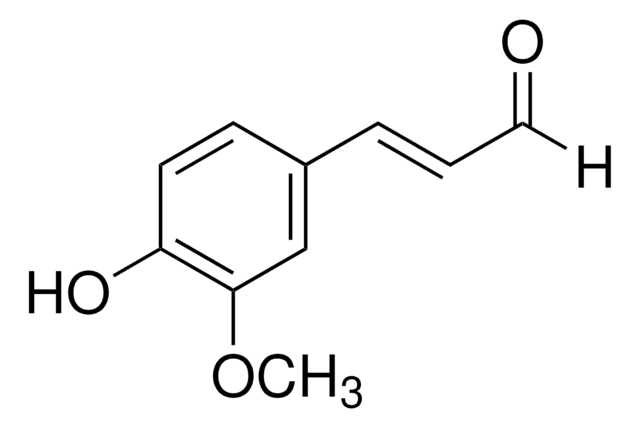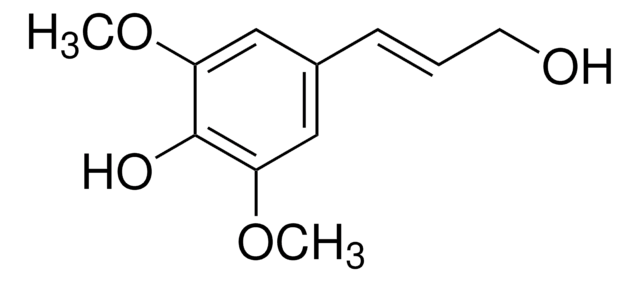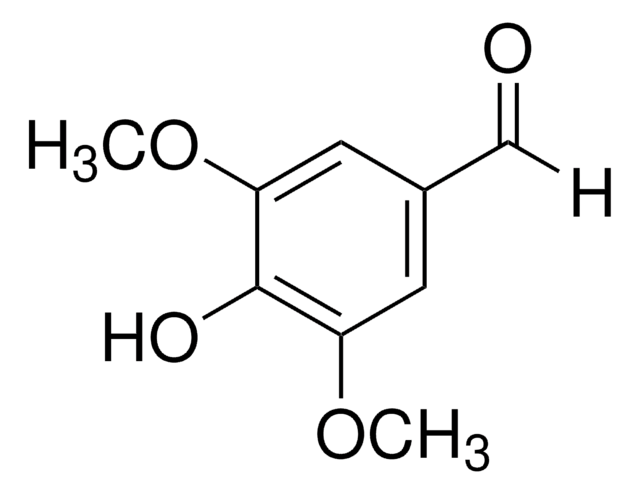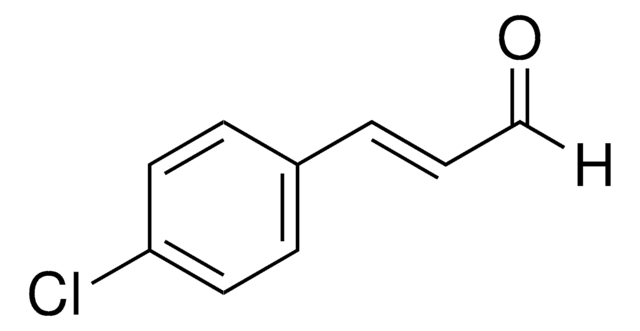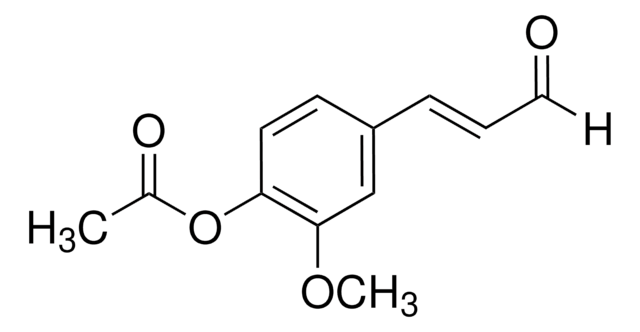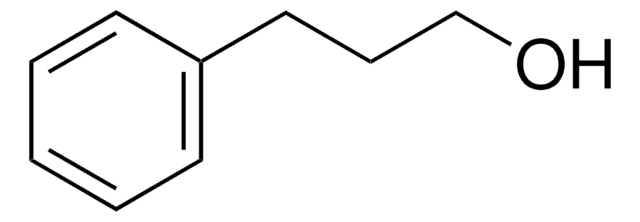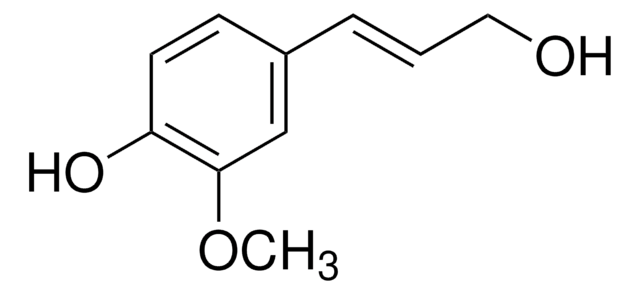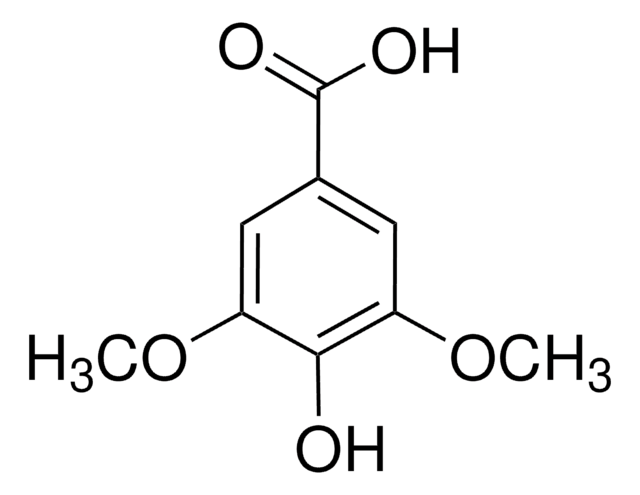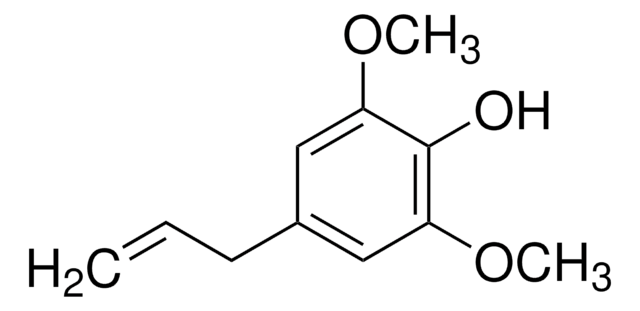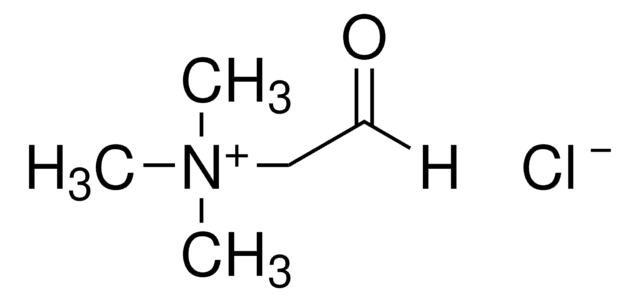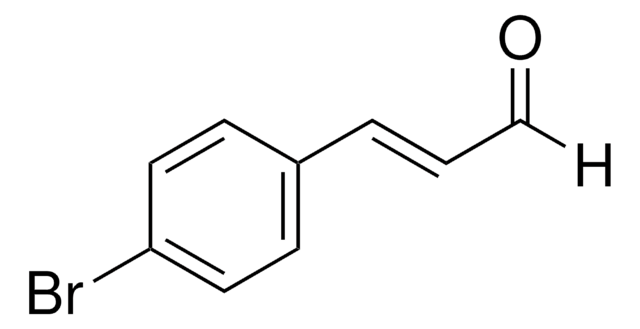Kluczowe dokumenty
382159
trans-3,5-Dimethoxy-4-hydroxycinnamaldehyde
98%
Synonim(y):
Sinapinaldehyde
About This Item
Polecane produkty
Próba
98%
Formularz
solid
mp
104-106 °C (lit.)
temp. przechowywania
2-8°C
ciąg SMILES
[H]C(=O)\C([H])=C(/[H])c1cc(OC)c(O)c(OC)c1
InChI
1S/C11H12O4/c1-14-9-6-8(4-3-5-12)7-10(15-2)11(9)13/h3-7,13H,1-2H3/b4-3+
Klucz InChI
CDICDSOGTRCHMG-ONEGZZNKSA-N
Szukasz podobnych produktów? Odwiedź Przewodnik dotyczący porównywania produktów
Zastosowanie
Hasło ostrzegawcze
Warning
Zwroty wskazujące rodzaj zagrożenia
Zwroty wskazujące środki ostrożności
Klasyfikacja zagrożeń
Eye Irrit. 2 - Skin Irrit. 2 - STOT SE 3
Organy docelowe
Respiratory system
Kod klasy składowania
11 - Combustible Solids
Klasa zagrożenia wodnego (WGK)
WGK 3
Temperatura zapłonu (°F)
Not applicable
Temperatura zapłonu (°C)
Not applicable
Środki ochrony indywidualnej
dust mask type N95 (US), Eyeshields, Gloves
Wybierz jedną z najnowszych wersji:
Masz już ten produkt?
Dokumenty związane z niedawno zakupionymi produktami zostały zamieszczone w Bibliotece dokumentów.
Klienci oglądali również te produkty
Nasz zespół naukowców ma doświadczenie we wszystkich obszarach badań, w tym w naukach przyrodniczych, materiałoznawstwie, syntezie chemicznej, chromatografii, analityce i wielu innych dziedzinach.
Skontaktuj się z zespołem ds. pomocy technicznej